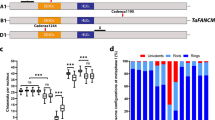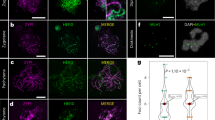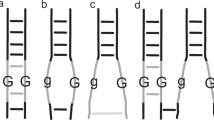Abstract
PAIRED meiotic chromosomes may have their four chromatids or strands involved in a variety of ways in two adjacent chiasmata. In most studies of chiasmata the materials have not been favourable enough to permit the tracing of all four strands through two or more chiasmata. We have recently been able to do this in forty-eight complete pollen mother cells of Trillium erectum, and have observed therein eight types of chiasma pairs. These are shown diagrammatically in Fig. 1 together with their frequencies and interstitial lengths (alternative one-plane representations of these three-dimensional configurations are here neglected).
This is a preview of subscription content, access via your institution
Access options
Subscribe to this journal
Receive 51 print issues and online access
$199.00 per year
only $3.90 per issue
Buy this article
- Purchase on Springer Link
- Instant access to full article PDF
Prices may be subject to local taxes which are calculated during checkout
Similar content being viewed by others
References
Hearne, E. M., and Huskins, C. L., "Chromosome Pairing in Melanoplus femur rubrum". Cytologia, 6, 123 (1935).
Sax, K., "Chromosome Coiling in Relation to Meiosis and Crossing-Over". Genetics, 21, 324 (1936).
Lindegren, C. C., and Lindegren, G., "Non-Random Crossing-Over in Neurospora". J. Hered., 28, 105 (1937).
Beadle, G. W., and Emerson, S., "Further Studies of Crossing-Over in Attached-X Drosophila melanogaster". Genetics, 20, 192 (1935).
Bonnier, G., and Nordenskiold, M., "Studies in Drosophila melanogaster with Attached-X's". Hereditas, 23, 257 (1937).
Huskins, C. L., et al. "Chromonema and Chiasma Studies in Asynaptic, Desynaptic and Normal Trillium erectum". Records of the Genetics Society of America (1937).
Author information
Authors and Affiliations
Rights and permissions
About this article
Cite this article
HUSKINS, C., NEWCOMBE, H. Genetic and Cytological Interference. Nature 143, 808–809 (1939). https://doi.org/10.1038/143808b0
Issue Date:
DOI: https://doi.org/10.1038/143808b0
Comments
By submitting a comment you agree to abide by our Terms and Community Guidelines. If you find something abusive or that does not comply with our terms or guidelines please flag it as inappropriate.



